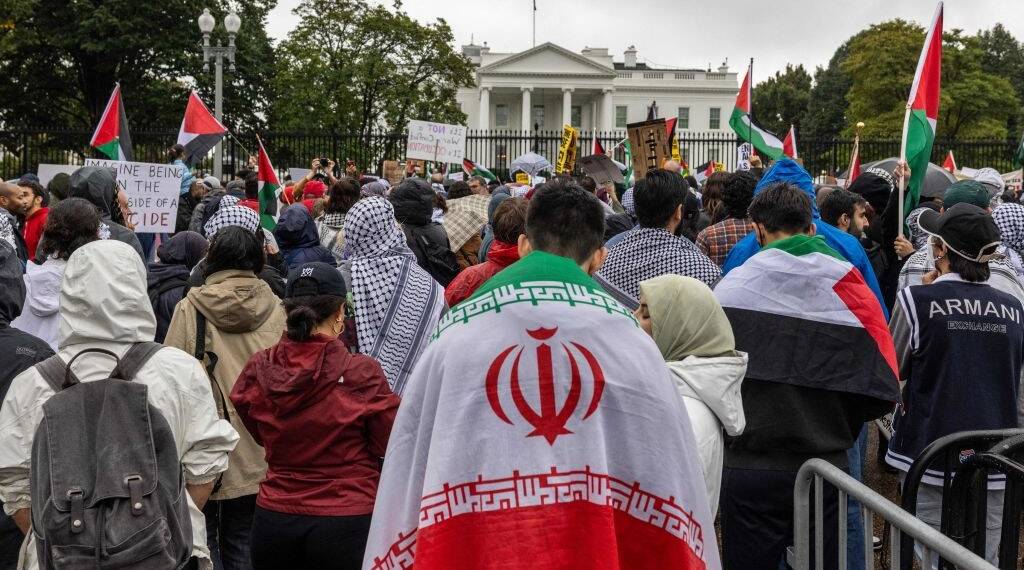The Iranian populace has shown a marked reluctance to participate in pro-Gaza demonstrations, indicating a significant disconnection from the Iran’s government’s aggressive posturing towards Israel.
The tepid response from the Iranian public is a deliberate choice, indicating a broader refusal to engage with the government’s agenda. Raz Zimmt, an Iran scholar at the Institute for National Security Studies in Tel Aviv, notes that even when the Iranian regime organizes pro-Gaza protests, the turnout remains disappointingly low. This lack of engagement signals that the Palestinian cause, while heavily promoted by the regime, does not resonate with the Iranian people as much as the government would hope. Zimmt highlights that antagonism towards Israel is considered a foundational pillar of the Islamic Republic, a regime that has been struggling with a crisis of legitimacy for years and currently enjoys the support of only a small fraction of the population.
Join us on Telegram: https://t.me/tfiglobal
Support for this interpretation comes from a survey by GAMAAN, a research institute based in the Netherlands, which found overwhelming opposition to the Islamic Republic among Iranians both within and outside the country. This widespread disapproval is manifesting as a boycott of the Palestinian cause by the Iranian public, a stance that even conservative commentators within Iran, who are typically supporters of Supreme Leader Ali Khamenei, have had to acknowledge. Nasser Imani, a conservative pundit, admitted that many Iranians tend to oppose whatever the Islamic Republic supports and vice versa, reflecting a deep-seated disenchantment with the regime’s priorities.
This sentiment is further complicated by the complex dynamics between Iran and the Palestinian factions it supports. While Tehran provides financial and military aid to Hamas, its relationship with the group is fraught with tension. Hamas does not view itself as an Iranian proxy to the extent that Hezbollah does, considering itself part of a broader Palestinian national resistance. Ori Goldberg, an Iran expert at Reichman University, points out that Iran’s true proxy in Gaza is the Palestinian Islamic Jihad rather than Hamas. This distinction underscores the nuanced and sometimes turbulent nature of Iran’s involvement in Palestinian affairs.
Read More: Why are Iran and Pakistan pounding each other?
Iran’s cautious approach to its support for Palestinian militants against Israel, despite its bellicose rhetoric, also reflects a strategic restraint. Iranian Foreign Minister Hossein Amir-Abdollahian’s statements during a visit to Syria emphasized Tehran’s desire to avoid an escalation of conflict in the region. This stance is mirrored in Iran’s restrained response to Israeli actions against its military leaders and interests in the region, including the killing of Islamic Revolutionary Guard Corps (IRGC) members and attacks on its arms convoys in Syria.
The Iranian regime’s preoccupation with the Palestinian cause contrasts sharply with the public’s priorities, which are more focused on domestic issues. The economic toll of supporting proxy groups in the Middle East, combined with the impact of international sanctions, has led to widespread economic hardship within Iran. Popular slogans in anti-regime protests reflect a desire for the government to prioritize domestic welfare over external causes. This sentiment is indicative of a broader disengagement from the regime’s ideological pursuits, highlighting a rift between the government and the people it governs.
For nearly two decades, this divide has been growing, with successive generations expressing disillusionment with the Islamic Republic’s failure to improve economic conditions or expand political and social freedoms. The low turnout in the 2021 presidential elections and the widespread protests following the death of Mahsa Amini in police custody are testament to the deep-seated frustration and despair among large segments of the Iranian population.
Despite the regime’s ongoing efforts to suppress dissent, the legitimacy crisis it faces is a topic of frequent discussion within Iran, even among more conservative media outlets. The persistent unrest and demonstrations, while not indicative of an imminent overthrow of the regime, underscore a widespread desire for change among the Iranian populace. However, as Goldberg notes, the absence of a viable alternative to the Islamic Republic, coupled with the cautionary tales of the Arab Spring, has left many Iranians wary of radical change, preferring to navigate the complexities of their current situation rather than risking the uncertainties of a new political order.








